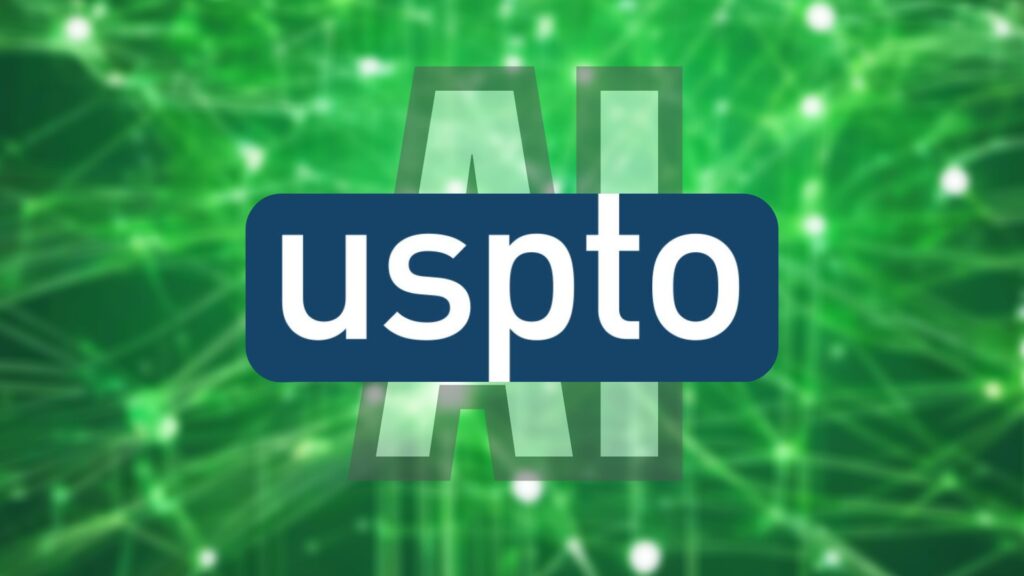
On April 10, 2024, the United States Patent and Trademark Office (“USPTO”) issued guidance to attorneys about using AI in matters before the USPTO. While there are no new rules implemented to address the use of AI, the guidance seeks to remind practitioners of the existing rules, inform of risks, and provide suggestions for mitigating those risks. The notice acknowledges that it is an effort to address AI considerations at the intersection of innovation, creativity and intellectual property, consistent with the President’s recent executive order that calls upon the federal government to enact and enforce protections against AI-related harms.
The guidance tends to address patent prosecution and examination more than trademark practice and prosecution, but there are still critically important ideas relevant to the practice of trademark law.
The USPTO takes a generally positive approach toward the use of AI, recognizing that tools using large language models can lower the barriers and costs for practicing before the USPTO and help practitioners serve clients better and more efficiently. But it recognizes potential downsides from misuse – some of which is not exclusive to intellectual property practice, e.g., using AI generated non-existent case citations in briefs filed before the USPTO and inadvertently disclosing confidential information via a prompt.
Key Reminders in the Guidance
The USPTO’s guidance reminds practitioners of some specific ways that they must adhere to USPTO rules and policies when using AI assistance in submissions – particularly because of the need for full, fair, and accurate disclosure and the protection of clients’ interests.
Candor and Good Faith: Practitioners involved in USPTO proceedings (including prosecution and matters such as oppositions and cancellation proceedings before the Trademark Trial and Appeal Board (TTAB)) are reminded of the duties of candor and good faith. This entails the disclosure of all material information known to be relevant to a matter. Though the guidance is patent-heavy in its examples (e.g., discussing communications with patent examiners), it is not limited to patent prosecution but applies to trademark prosecution as well. The guidance details the broader duty of candor and good faith, which prohibits fraudulent conduct and emphasizes the integrity of USPTO proceedings and the reliability of registration certificates issued.
Signature Requirements: The guidance outlines the signature requirement for correspondence with the USPTO, ensuring that documents drafted with AI assistance are reviewed and believed to be true by the signer.
Confidentiality: The confidentiality of client information is of key importance, with practitioners being required to prevent unauthorized disclosure, which could be exacerbated by the use of AI in drafting applications or conducting clearance searches.
International Practice: Foreign filing and compliance with export regulations are also highlighted, especially in the context of using AI for drafting applications or doing clearance searches. Again, while the posture in the guidance tends to be patent heavy, the guidance is relevant to trademark practitioners working with foreign associates and otherwise seeking protection of marks in other countries. Practitioners are reminded of their responsibilities to prevent improper data export.
USPTO Electronic Systems: The guidance further addresses the use of USPTO electronic systems, emphasizing that access is governed by terms and conditions to prevent unauthorized actions.
Staying Up-to-date: The guidance reiterates the duties owed to clients, including competent and diligent representation, stressing the need for practitioners to stay informed about the technologies they use in representing clients, including AI tools.
More Practical Guidance for Use of Tools
The guidance next moves to a discussion of particular use of AI tools in light of the nature of the practice and the rules of which readers have been reminded. Key takeaways in this second half of the guidance include the following:
Text creation:
Word processing tools have evolved to incorporate generative AI capabilities, enabling the automation of complex tasks such as responding to office actions. While the use of such AI-enhanced tools in preparing documents for submission to the USPTO is not prohibited or subject to mandatory disclosure, users are reminded to adhere to USPTO policies and their duties of candor and good faith towards the USPTO and their clients when employing these technologies.
Likely motivated by court cases that have gotten a lot of attention because lawyers used ChatGPT to generate fake case cites, the USPTO addressed the importance of human-review of AI generated content. All USPTO submissions, regardless of AI involvement in their drafting, must be signed by the presenting party, who attests to the truthfulness of the content and the adequacy of their inquiry into its accuracy. Human review is crucial to uphold the duty of candor and good faith, requiring the correction of any errors or omissions before submission. While there is no general duty to disclose AI’s use in drafting unless specifically asked, practitioners must ensure their submissions are legally sound and factually accurate and consult with their clients about the representation methods used.
More specifically, submissions to the TTAB and trademark applications that utilize AI tools require meticulous review to ensure accuracy and compliance with the applicable rules. This is vital for all documents, including evidence for trademark applications, responses to office actions, and legal briefs, to ensure they reflect genuine marketplace usage and are supported by factual evidence. Special attention must be given to avoid the inclusion of AI-generated specimens or evidence that misrepresents actual use or existence in commerce. Materials produced by AI that distort facts, include irrelevant content, or are unduly repetitive risk being deemed as submitted with improper intent, potentially leading to unnecessary delays or increased costs in the proceedings.
Filling out Forms:
AI tools can enhance the efficiency of filing documents with the USPTO by automating tasks such as form completion and document uploads. But users must ensure their use aligns with USPTO rules, particularly regarding signatures, which must be made by a person and not delegated to AI. Users are reminded that USPTO.gov accounts are limited to use by natural persons. AI systems cannot hold such accounts, emphasizing the importance of human oversight in submissions to ensure adherence to USPTO regulations and policies.
Automated Access to USPTO IT Systems:
The guidance notes that when utilizing AI tools to interact with USPTO IT systems, it is crucial to adhere to legal and regulatory requirements, ensuring authorized use only. Users must have proper authorization, such as being an applicant, registrant, or practitioner, to file documents or access information. AI systems cannot be considered “users” and thus are ineligible for USPTO.gov accounts. Individuals employing AI assistance must ensure the tool does not overstep access permissions, risking potential revocation of the applicable USPTO.gov account or face other legal risk for unauthorized access. Additionally, the USPTO advises against excessive data mining from USPTO databases with AI tools. The USPTO reminds readers that it provides bulk data products that could assist in these efforts.







